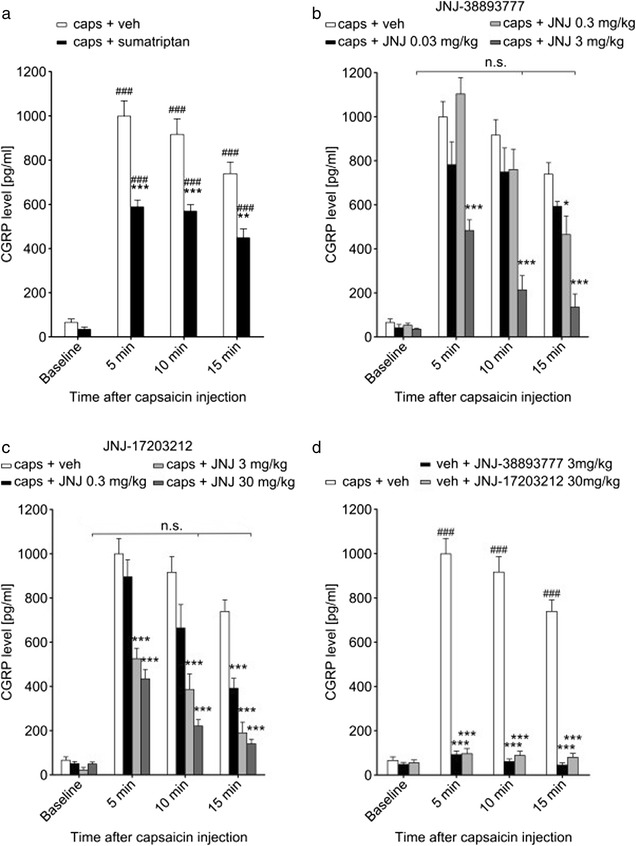Fig. 2.

TRPV1 antagonists are effective in blocking capsaicin-induced CGRP release. a Injection of capsaicin (4 μmol/kg) into the carotid artery caused an increase in CGRP concentration in jugular vein blood. The increase was substantial within 5 min and still significant albeit slightly decreasing after 15 min. Administration of sumatriptan (300 μg/kg; black bars) prior to capsaicin treatment reduced the elevated CGRP levels significantly, although they were still considerably higher than baseline values. b The TRPV1 antagonist JNJ-38893777 in the highest dose of 3 mg/kg (dark grey bars) reduced jugular CGRP levels after capsaicin significantly, returning them to near baseline levels within 10 min. Lower doses of 0.3 mg/kg (light grey bars) and 0.03 mg/kg (black bars) were less effective. c JNJ-17203212 had a dose-dependent effect on the capsaicin-induced increase in jugular CGRP concentration. CGRP release was completely abolished within 10 min when the antagonist was administered at 30 mg/kg (dark grey bars) and within 15 min when administered at 3 mg/kg (light grey bars). The lowest dose of 0.3 mg/kg (black bars) reduced the CGRP levels significantly but not to the level of the pre-capsaicin baseline after 15 min. d Neither JNJ-38893777 (black bars) nor JNJ-17203212 (grey bars) when used in their highest doses had any effect on jugular CGRP levels in animals that did not receive an injection of capsaicin. Values were not significantly different compared to the respective baseline. # compares to baseline values of the same group. * compares to capsaicin + vehicle at the same time point. n.s. not significant (compared to baseline values of the same group). *p < 0.05; **p < 0.01; ***p < 0.001
